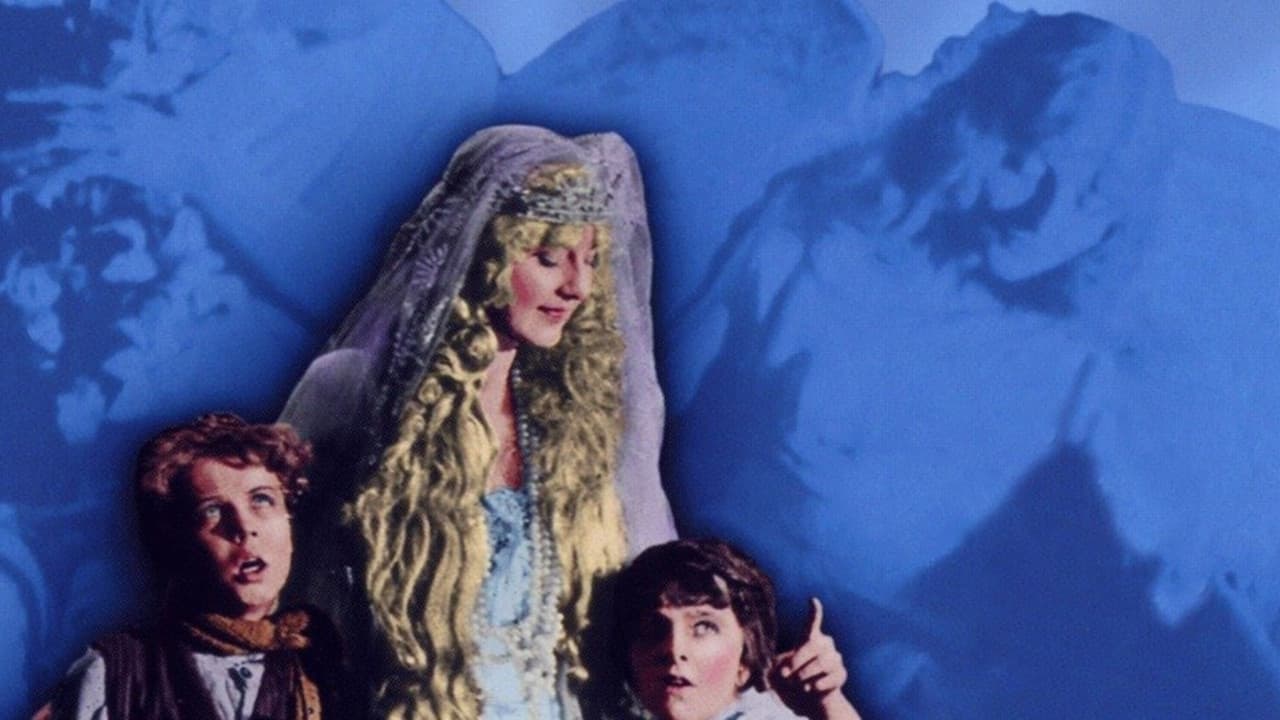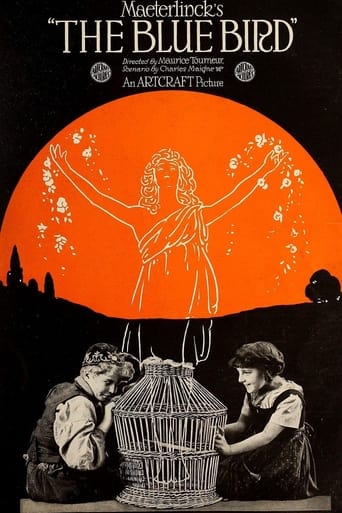

Waste of time
... View MoreThere is just so much movie here. For some it may be too much. But in the same secretly sarcastic way most telemarketers say the phrase, the title of this one is particularly apt.
... View MoreThere is, somehow, an interesting story here, as well as some good acting. There are also some good scenes
... View MoreOne of the film's great tricks is that, for a time, you think it will go down a rabbit hole of unrealistic glorification.
... View MoreThe Blue Bird, an American silent fantasy film based on a play of the same name by Maurice Maeterlinck, in many ways can and will be compared to the much more renowned and known 1939 classic Wizard of Oz. From animals given the forms of humans, to the whimsical, otherworldly sets and surreal, almost poetic narrative, the film certainly doesn't lack imagination. However, while this at times can work to the film's benefit, Maurice Tourneur at times seems to get a little carried away with his imagery and forgets to keep the story moving along. There's an extended stretch somewhere between the half- way point and final five minutes where the film indulges in its sense of whimsy and fantasy to the detriment of the story's central plot line. Sure, it's more of a moralistic play than an A-to-B-to-C kind of story, I can see that clearly and Tourneur certainly plays to his strengths as an artist first. What lets the work down though is that the end result resembles a half-baked pastiche of ideas and themes rather than single, always-moving, cohesive film. This is where the resemblance to the 1939 classic stops. It may be as visually impressive (for its much earlier time), but what is lacks is a gripping and compelling story. It's fine, sure, but at the same time lacks any real punch or lasting, memorable moments.
... View MoreTotally wacky silent here about 2 kids who stubbornly refuse to give their bird away to a sick child, then they both have a dream that finds then on a quest for another find another bird to give to them, They are joined by yes, human forms of fire, water, a cat, and, yes, a loaf of bread. They go to multiple places, some are definitely creepy, like they visit their dead grandparents AND the 5-6 dead brothers and sisters they have. Now, THATS messed up. There's a lot more too. I wouldn't recommend children seeing this, as there's way too much stuff adults would have to explain, or want to. eeps. It's all too hard to follow too. Blargh,
... View MoreIt's a pity that the 1918 version of "The Blue Bird" suffers so much from nitrate decomposition. Were it not for that I would give it a full 10 points. Nonetheless, what we have is sufficient to give great pleasure and it is certainly far superior to the 1940 version with Shirley Temple.Some of the scenes have a rather staged look but, even so, one admires the beautiful—often elegant—artistic consciousness in their presentation. This is particularly true of the backdrops. Generally, I thought the restoration was pretty good with effective use of tinting to make the most of the emotional atmosphere of the various sequences.I liked the presentation of the message—always an important factor in a fairy tale. The quest for happiness which is always found to be closer than we expect, the discovery of joy in the joy of others, the beautiful and wonderful intangible world of the imagination and the truth of dream—all these are beautifully presented through the innocence of the children. And here one must admire the performances of little Tula Belle as Mytyl and Robin Macdougall as Mytyl's older brother, Tyltyl. Tula, particularly, has an engaging naturalness which is wonderful. Dog and Cat look forward to "The Wizard of Oz" and the actors certainly convey the habits of the creatures they portray.The allegory with its spiritual message was reminiscent of the Narnian series of C.S. Lewis and the way the point was driven home at the end was very effective. Finally, I think that the music score showed excellent taste and skill in the way it was wedded to the film.The Blue Bird is a beautiful film with a universal message.
... View MoreTaken from Maurice Maeterlinck's play (which was produced in the period immediately after Barrie's successful "Peter Pan") about 2 children who must go on an epic journey to find the Blue Bird of Happiness. Their journey takes them through the houses of terror, excessive wealth, and happiness. There are some very interesting scenes visually speaking. In the early sequences, we see the common household items come to life, such as milk (a lovely woman in flowing white robes), the family dog and cat (who bear comparison to the animals in the silent versions of "Oz"), a sugar loaf (amusingly portrayed by a man in a white tube costume with a pointy head) and most impressively fire (an interpretive dance with striking impact). Unfortunately some of these early scenes are almost ruined by the deterioration of the print.Later they see some somewhat terrifying things as they must enter the house of "Mrs. Night". Upon leaving there, they encounter their dead grandparents in a graveyard, who remonstrate with them for not visiting their graves enough. That's typical of the many ways in which this film attempted to give children a guilt trip about not taking things in their lives seriously enough. I found it bizarre that their "dead brothers and sisters" were also present, and there were a full half dozen of them. That would indicate an infant mortality rate above 80%. There's an amusing bit where they are in some kind of house that symbolizes excessive luxury. All the "things" begin to turn from their mission and enjoy the luxury, including the Sugar Loaf who is being licked by a half dozen lovely ladies! They end up in the house of happiness, where they see a deified version of their mother and in one interesting bit they come upon all the children who have not yet been born.The children who portrayed Mytyl and Tytyl were quite engaging, but most of the other performances in the film felt very 2 dimensional. Although there is some stylization, a lot of the shots feel very stage-bound. I think Tourneur should have strayed further from the story's original stage version and made it more cinematic in general. Also I think the film's story and its message are hopelessly obvious. There really isn't a feeling of continuity in the children's character transformations, they seem confused and at times foolish only to suddenly realize what's happening in the film's conclusion -- which might work in terms of the plot but it doesn't make this a richer film. In the end I think it has to be called an interesting failure by Tourneur in terms of expanding the scope of film fantasy.
... View More